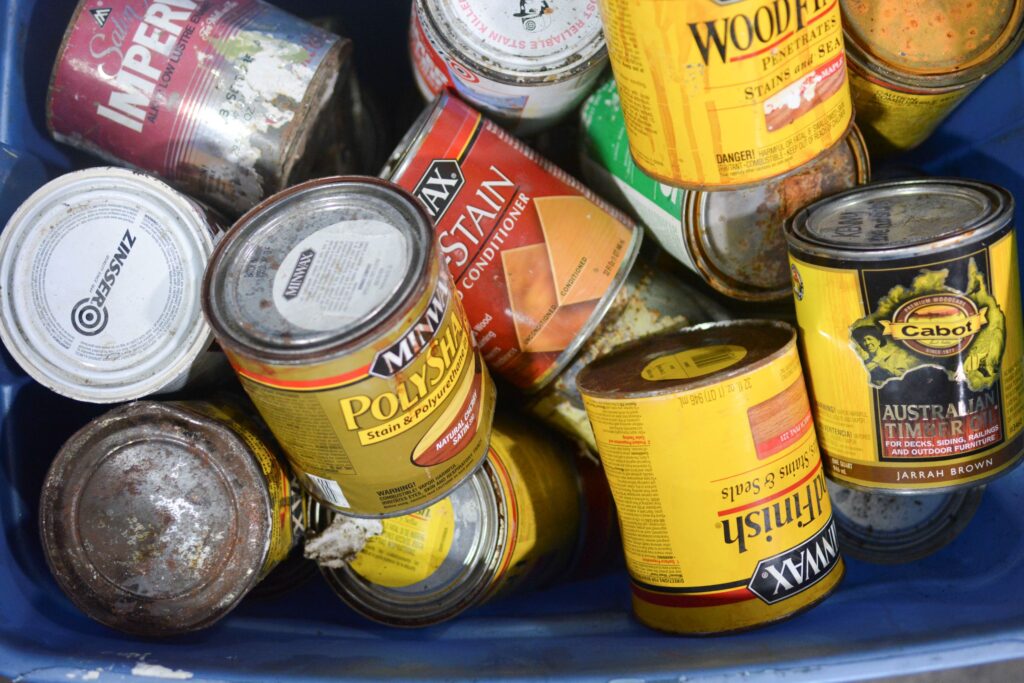As one of the most common household hazardous products inside homes in America and definitely the top item brought into our collections centers in Massachusetts, paint represents a problem for homes. Leftover paint from projects and painting the house gather dust, chemically break down, freeze, and pose fire hazards. Today, let’s talk about dealing with oil-based paints and stains, including what makes them toxic, how to store and handle them, and how to dispose of them.
The Hazards of Oil-Based Paints and Stains
All paints have three major ingredients – the paint, the binder, and the solvent. The solvent, the medium that carries the paint in oil-based paints, is oil. Inside this oil are volatile organic compounds (or VOCs) that, while perfect for paint due to their high vapor pressure and low water solubility, also can break down. Over time, they will emit from the paint, which has short and long-term health effects. In addition, older paints and stains may include heavy metals such as lead, mercury, chromium, or cadmium.
Handling and Disposal of Oil-Based Paints and Stains
In order to make sure these paints and stains are safe for use and storage, follow these steps:
- Inspect the paint. Determine if it’s oil or latex-based. Oil-based paint labels often say “alkyd,” “contains solvents,” “clean up with mineral spirits,” or “combustible.” If it contains lead or other heavy metals, it should be set aside for disposal.
- Seal the paint. Especially after just using or reopening, take extra steps to seal the cans again. Cover the opening with a piece of plastic wrap and then place and close the lid over that tightly.
- Store the paint. Oil-based paints are flammable, so take extra care to store them away from high temperatures and sources of sparks. Latex paint becomes unusable if frozen, so store it above freezing. Store the can upside down.
- Reuse the paint. Make sure to reopen the paint in a well-ventilated area. Test the paint on a clean surface and allow it to dry for 48 hours.
- Dispose of the paint. Oil-based paints cannot be thrown in the trash. Many municipalities run a surplus paint collection program: see if your county is involved.
What About Latex Paint or Painting Businesses?
As a water-based paint, latex paint is less hazardous, but many of the above measures should still be used. If you do have leftover latex paint, you can dispose of small quantities in the trash. Learn more about it in our blog, Can I Dispose of Latex Paint at Home? If you’re running a painting business, you may qualify for MA’s VSQG small business waste disposal program. Learn more about it in our post, What Do I Do with Hazardous Waste Generated from a Home Business?
Otherwise, you can come to one of our Household Hazardous Products Collection Centers for paint disposal! We accept both latex and oil-based paints and stains, along with so many more hazardous household products. Our pricing is simple and straightforward, and we pride ourselves on making the experience as fast and easy as possible. Call us at 1 (866) 769-1621 or contact us online today.



Leave a Reply